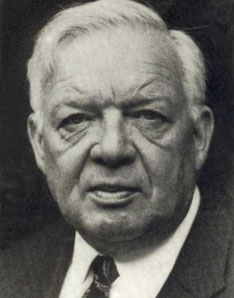| Werner Forssmann  AKA Werner Theodor Otto Forssmann AKA Werner Theodor Otto Forssmann
Born: 29-Aug-1904
Birthplace: Berlin, Germany
Died: 2-Jun-1979
Location of death: Schopfheim, Germany
Cause of death: Heart Failure
Gender: Male
Religion: Lutheran
Race or Ethnicity: White
Sexual orientation: Straight
Occupation: Doctor Nationality: Germany
Executive summary: Cardiac catheterization Military service: Germany Army (1939-45, Maj.) While German physician Werner Forssmann was still an intern, he theorized the basics of cardiac catheterization, whereby a long, very narrow tube (a catheter) is inserted into a vein at the elbow, then advanced through the blood vessel until it reaches the heart. The catheter, he surmised, could be used to ferry drugs needed for cardiac resuscitation directly into the heart. His superiors dismissed the idea, certain that such an intrusion into the heart's inner workings would be fatal. So Forssmann tested his idea on himself.
He anesthetized his lower arm and opened the antecubital vein in his own elbow, inserted a small metal tube into his bloodstream, and watched on a fluoroscope screen as it progressed up his arm and toward his heart. He then walked down the hall and up two flights of stairs to have an x-ray taken, showing the catheter in his right auricle, near the atrium of his heart. After his audacious experiment Forssmann published a paper on his success, suggesting that this technique would allow measurements of blood pressure inside the heart, and could be used to introduce radiopaque dyes, allowing detailed x-rays of the heart that would expose any abnormalities. When the paper was published, though, he was widely considered a kook, and condemned as foolhardy by his superiors. For self-experimentation, he faced disciplinary actions so severe that he abandoned his cardiology internship and pursued urology instead.
He served in the medical unit of the German Army during World War II, rising to the rank of Major before he was captured, and sat out the remainder of the war in a prison camp. His paper on catheterization, meanwhile, was read with great interest by two American scientists at Columbia University, André F. Cournand and Dickinson W. Richards, who developed methods for using cardiac catheters in research and diagnosis of heart disease.
After the war Forssmann worked as a lumberjack, then as a country doctor. He was reportedly flabbergasted when, more than two decades after performing his experiment, he learned he would share the 1956 Nobel Prize with the two Americans. "I feel like a village parson", he said, "who has just learned that he has been made bishop". After receiving his honors, he was named Chief of Surgery at Evangelical Hospital in Düsseldorf.
His son, physicist Bernd Forssmann, helped develop the first clinical lithotriptor, a non-invasive device for breaking up gallstones without surgery, which is now used on millions of patients worldwide every year. Another son, anatomist Wolf-Georg Forssmann, was the first to isolate the atrial natriuretic peptide. Father: Julius Forssmann (attorney, d. 1916)
Mother: Emmy Hindenberg Forssmann (office clerk)
Wife: Elsbet Engel (physician, d. 1993)
Son: Klaus Forssmann (physician, b. 1934)
Son: Knut Forssmann (b. 1936)
Son: Jörg Forssmann (architect, b. 1938)
Son: Wolf-Georg Forssmann (anatomist, b. 1939)
Son: Bernd Forssmann (physicist, b. 1940)
Daughter: Renate Forssmann-Falck (psychiatrist, b. 1943)
High School: Askanische Gymnasium, Berlin (1922)
Medical School: MD, Friedrich Wilhelm University (1929)
National Socialist German Workers Party (1932)
Taken Prisoner of War
Nobel Prize for Medicine 1956, with André F. Cournand and Dickinson W. Richards
German Ancestry
Risk Factors: Smoking
Author of books:
Experiments on Myself: Memoirs of a Surgeon in Germany (1974, autobiography)
Requires Flash 7+ and Javascript.
Do you know something we don't?
Submit a correction or make a comment about this profile
Copyright ©2019 Soylent Communications
|